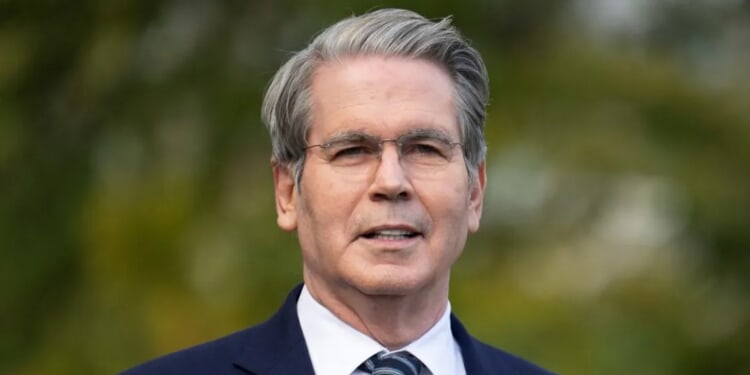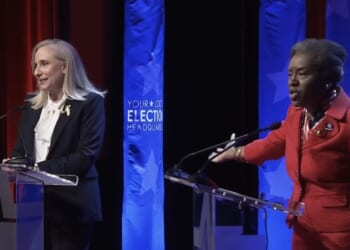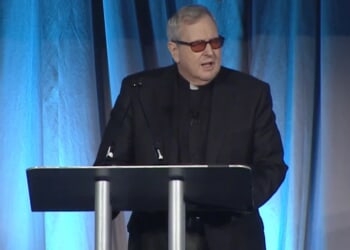Treasury Secretary Scott Bessent confirmed President Donald Trump has five potential successors to serve as Federal Reserve Chairman Jerome Powell’s successor when his term ends in May 2026.
On Air Force One Monday, Bessent told reporters Trump is considering nominating Kevin Hassett, former Kevin Warsh, Michelle Bowman, Christopher Waller, or Rick Rieder to replace Powell. The Federal Reserve Chair serves a four-year term, which is renewable. However, Trump has been vocal about wanting to replace Powell, whom he sees as an obstacle to enacting his economic agenda and rescuing America’s middle class from the decline it had under the Biden administration.
While all of Trump’s potential replacements are described as inflation hawks who generally favor interest rate cuts, their stances differ on supporting Trump’s ambitious economic agenda, which includes lower interest rates to boost growth, reduce debt servicing costs, and support policies like tariffs.
President Trump says he expects to make a decision on the next Fed Chair before the end of the year. Bessent confirms the five finalists to reporters on Air Force One:
– Governor Christopher Waller
– Governor Michelle Bowman
– Former Fed Governor Kevin Warsh
– NEC Director…— annmarie hordern (@annmarie) October 27, 2025
Kevin Hassett (White House Economic Adviser):
Hassett, as Trump’s longest-serving economic advisor and National Economic Council (NEC) Director, is among the leading candidates to be the next Fed chair, according to a July Washington Post article. He has been a vocal critic of Powell’s tenure at the Federal Reserve and has publicly argued that rates should be at least three percentage points lower than they are now. He has accused Powell and the rest of the board of partisanship in decision-making for refusing to cut rates, the Economic Times reported. (Sign up for Mary Rooke’s weekly newsletter here!)
While he publicly supports Fed independence from political influence, his alignment with Trump’s economic policies, including tariffs, suggests he would prioritize lower rates to reduce debt costs and stimulate the economy. During Trump’s first term, Hassett championed the 2017 Tax Cuts and Jobs Act, defending it as a driver of middle-class benefits through increased investment and earnings growth. He has advocated pro-growth stimulus and tax policies to achieve 4 % GDP growth, emphasizing opportunities for the middle class.
Kevin Hassett is both kind and brilliant. As Chairman of the Council of Economic Advisers, he has been instrumental in advancing this Admin’s pro-growth economic agenda & lifting America’s hard-working families.
Kevin is a dear friend & will be missed! Thankful for his service!
— Ivanka Trump (@IvankaTrump) June 7, 2019
This makes Hassett the most likely to support an economic agenda that promotes middle-class growth.
Kevin Warsh (Former Fed Governor):
Warsh served on the Fed Board under the administration of former President George W. Bush. Like Hassett, Warsh has criticized the Fed’s decision not to cut interest rates. In April, speaking at a conference organized by the Group of Thirty, an international body of financiers and academics, Warsh urged the Fed to stop relying on “stale” government data in setting monetary policy. He also warned against sharing their “latest musings” on economic forecasts, as it makes it harder to secure “stable prices and full employment.”
Kevin Warsh on Fox Business: The Fed can “lower interest rates a lot” to get mortgage rates down.
Warsh also says the Fed should shrink its balance sheet to “redeploy that money to Main Street so that Main Street can have the strong economy that we’re seeing in financial…
— Nick Timiraos (@NickTimiraos) October 24, 2025
“The more the Fed opines on matters outside of its remit, the more it jeopardizes its ability to ensure stable prices and full employment, and the more vulnerable it becomes to the body politic,” Warsh said, adding, “Each time the Fed jumps into action, the more it expands its size and scope, encroaching further on other macroeconomic domains.”
While Warsh has been a vocal critic of the Fed board since his departure, he has historically been staunchly pro-free trade, which clashes with Trump’s tariff policies, making him slightly less aligned with aggressive middle-class-focused fiscal agendas than Hassett.
Michelle Bowman (Current Fed Governor):
Bowman, a Trump appointee from 2018, has repeatedly signaled that she supports raising rates to combat inflation if it does not reach the Fed’s 2% inflation target, rather than Trump’s wish for massive rate cuts to induce rapid easing to stimulate the economy. Bowman’s preference for restrictive monetary policies makes her among the least likely to advance Trump’s agenda to cut rates.
However, Bowman’s desire to push gradual rate adjustments to maintain full employment and economic resilience aligns exceptionally well with Trump’s plan to grow the middle class. They may not see eye to eye on how to get there, but their end goal seems the same.
Christopher Waller (Current Fed Governor):
Waller, another Trump appointee from 2020, supported massive rate hikes during the Biden Administration to combat rising prices. Similar to Bowman, Waller advocates gradual rate adjustments to maintain the Fed’s progress on slowing inflation without overstimulating the economy. His balanced approach aligns somewhat with Trump’s push for lower rates. Still, his emphasis on data-driven caution runs counter to Warsh’s view that government data is an unreliable marker because it is constantly revised.
Federal Reserve Gov. Christopher Waller: “We need to start cutting rates at the next meeting… Over the next 3-6 months, we could see multiple cuts coming in.” pic.twitter.com/LLqx6biszH
— Rapid Response 47 (@RapidResponse47) September 3, 2025
He has analyzed the inflationary effects of tariffs and advocates cautious rate cuts to avoid labor-market risks. And while Waller supports stable growth, there is no indication that his monetary policies would help a middle-class boom.
Rick Rieder (BlackRock Executive):
Unlike the other four picks, Rieder has never worked on the Federal Reserve Board or in any federal economic role. Instead, Rieder comes from the private sector, serving as BlackRock’s chief investment officer for global fixed income. He is a veteran of the bond market. He aligns with Trump’s economic agenda, which argues that the Fed’s high interest rates could contribute to inflation by boosting corporate incomes and spending while restricting middle-class growth. However, like Waller, Rieder sees Trump’s trademark tariffs as an inflation driver. Despite his tariff concerns, he supports rate cuts.
Rieder is a unique choice as he’s one of the few who focus on U.S. growth driven by AI. As a fixed-income investor, he favors lower rates and opportunities in income-generating assets, which could indirectly benefit middle-class savers. However, his focus is not on growing America’s middle class, but rather market growth, making him less likely to push Trump’s middle-class agenda if it conflicts with his more market-oriented agenda. (ROOKE: Biden Deep Stater Sings Trump’s Praises On Foreign Policy Wins)
Of the five possible Powell replacements, Hassett seems most focused on middle-class growth. And while his Fed Chair role would center strictly on monetary tools rather than policies, he could coordinate closely with Trump’s economic agenda to amplify the middle class.
Follow Mary Rooke on X: @MaryRooke


![Scott Bessent Explains The Big Picture Everyone is Missing During the Shutdown [WATCH]](https://www.right2024.com/wp-content/uploads/2025/11/Scott-Bessent-Explains-The-Big-Picture-Everyone-is-Missing-During-350x250.jpg)








![Trump and X Users Brutally Mock ‘No Kings’ Protests with Hilarious Memes and AI Video [WATCH]](https://www.right2024.com/wp-content/uploads/2025/10/Trump-and-X-Users-Brutally-Mock-‘No-Kings-Protests-with-350x250.jpg)





